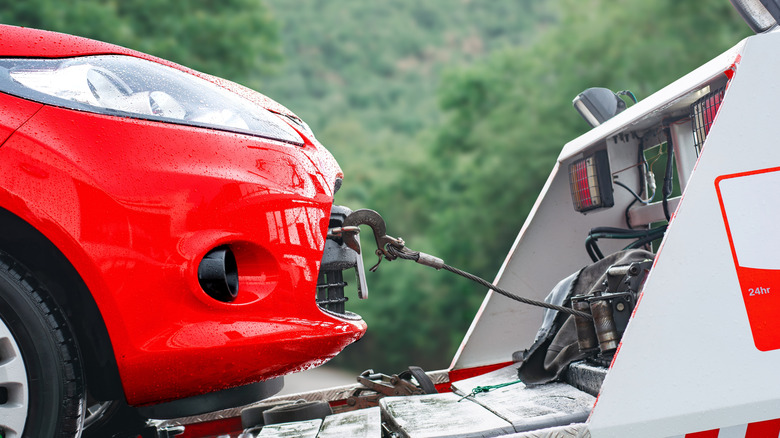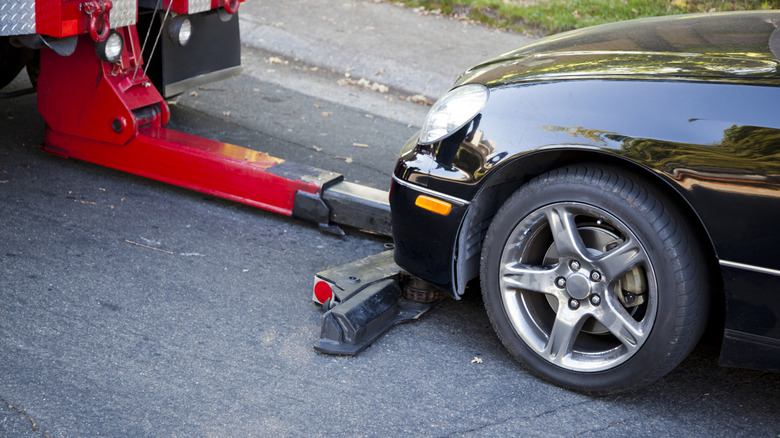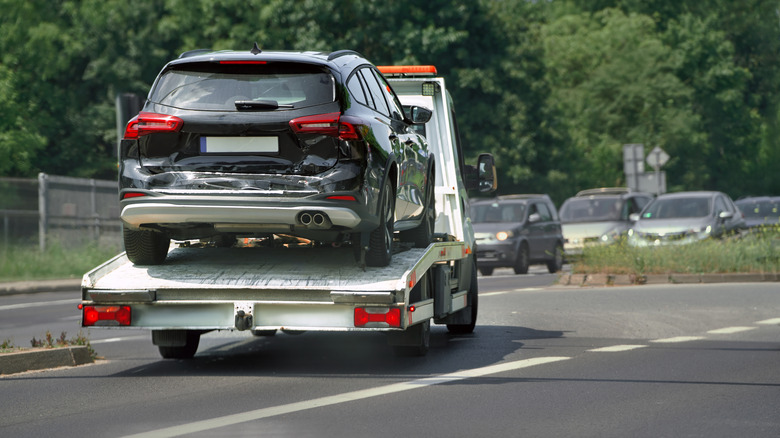Can You Tow An AWD Car In Neutral?
As a driver, you always have to be prepared for the unexpected — from changing weather conditions that cause slippery roads, to sudden detours on uneven terrain. That's why many drivers have turned to all-wheel drive (AWD) vehicles in recent years. For the most part, AWD cars operate like any other vehicle, with the biggest difference being their ability to automatically distribute power to all four wheels, providing better traction and stability in a variety of conditions. Given this, are there any downsides to vehicles that use AWD technology? From a practical perspective, there certainly are.
While AWD offers more control on the road, things get trickier when the vehicle needs to be towed, especially after a breakdown or an accident. That's because AWD cars come with unique challenges due to their integrated drivetrain and power distribution system. If your AWD vehicle isn't towed correctly, you could end up with a badly damaged transmission and drivetrain components. For example, towing your AWD vehicle with only two wheels lifted can cause its driveshaft to rotate, which could put excessive stress on the transmission, differentials, or transfer case. Even if you place your car in neutral, the drivetrain remains engaged. Towing an AWD with any wheels on the ground can result in costly internal damage.
Towing an AWD car in neutral can damage the drivetrain
Since AWD cars have only recently gone mainstream, you may think the technology is relatively new. However, you might be surprised to learn that the first car with AWD was made by Porsche over 100 years ago. There's no doubt the technology has come a long way since that time, but its core purpose — delivering power to all four wheels for better traction — remains the same. Nevertheless, the same technology that gives AWD vehicles better control on the road can also lead to serious problems if the car needs to be towed.
It doesn't matter if you tow your AWD vehicle in neutral; you still run the risk of damaging the drivetrain and transmission. If that happens, you may find yourself staring down costly repairs. That's because the drivetrain components in AWD vehicles are mechanically linked. While in theory, an AWD car can be towed on all of its wheels, it requires disconnecting the driveshaft — a complicated job best left to a mechanic, making it impractical for most towing situations.
What's the right way to tow an AWD car?
First and foremost, you should follow the manufacturer's guidelines before towing your AWD vehicle. Some car manufacturers provide special instructions for towing their AWD models. For example, Ford provides specific instructions for flat towing vehicles like the 2025 Ford Maverick Hybrid AWD in neutral, something that can't be done with many AWD vehicles because they don't have a neutral position in the transfer case.
The safest way to tow an AWD car is with a flatbed tow truck. A flatbed tow truck will keep all of its wheels off the ground, preventing potential damage to the drivetrain and other components. It also helps protect your tires and suspension by keeping them off the road while the car is being moved. If you call roadside assistance and find out there are no flatbed trucks available, another option is to use a tow truck with dollies. Dollies are small platforms with wheels that go under your car's tires. When used, the tow truck lifts one end of your car, and the dollies support the other, so none of the wheels are touching the road, protecting your drivetrain from damage.


